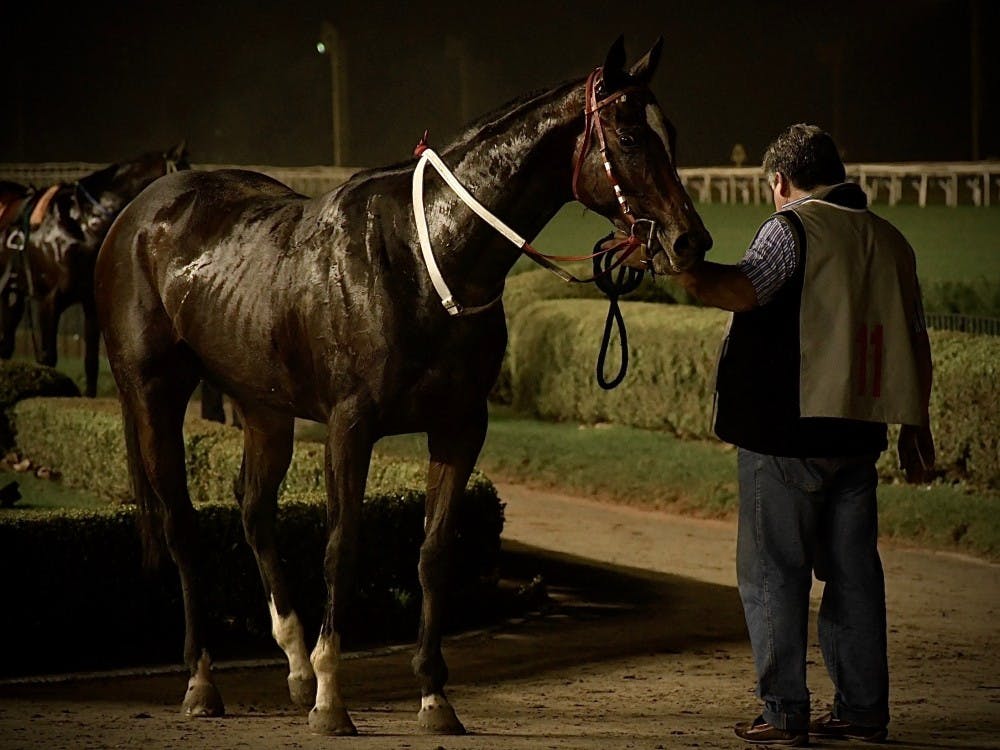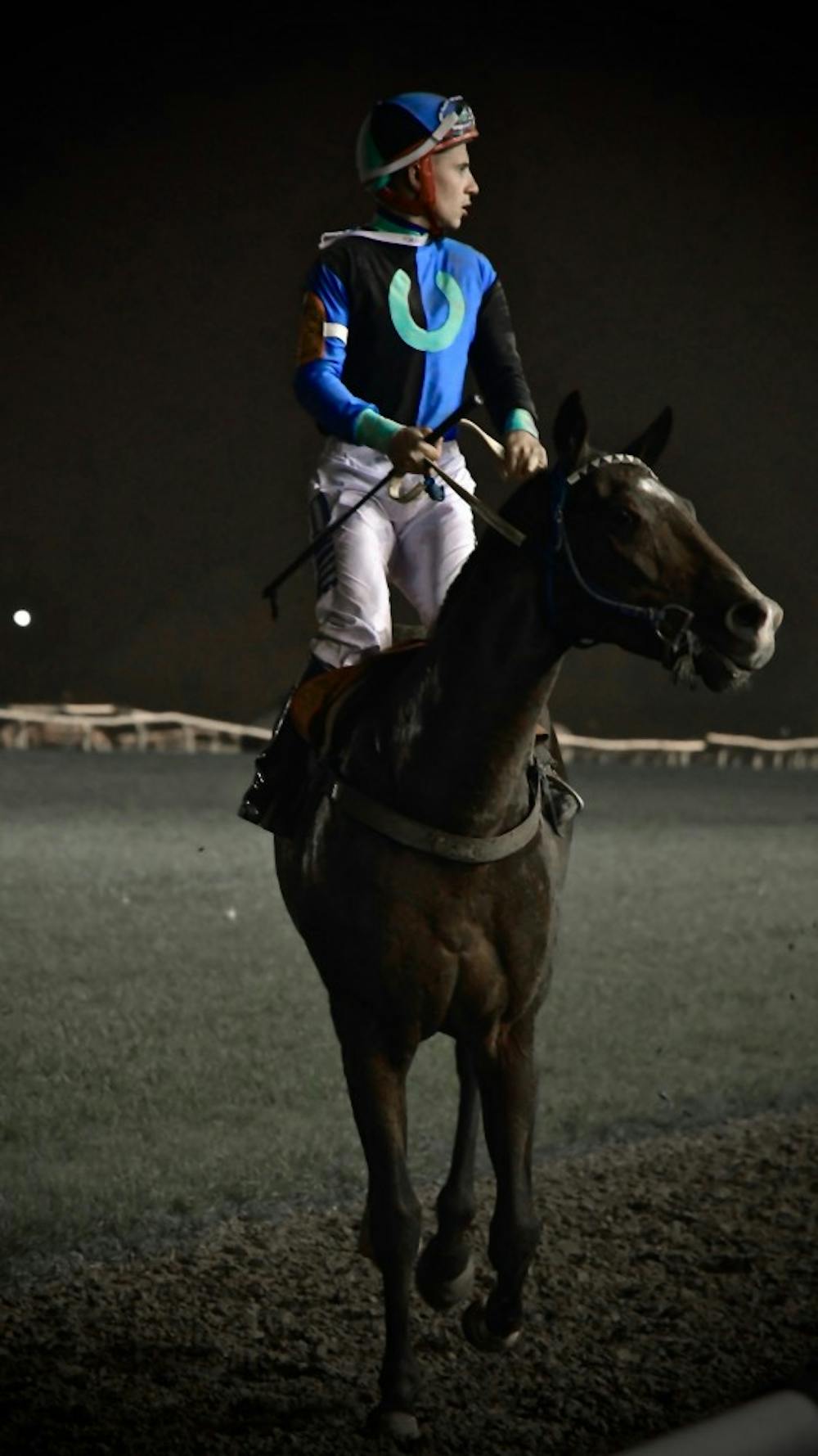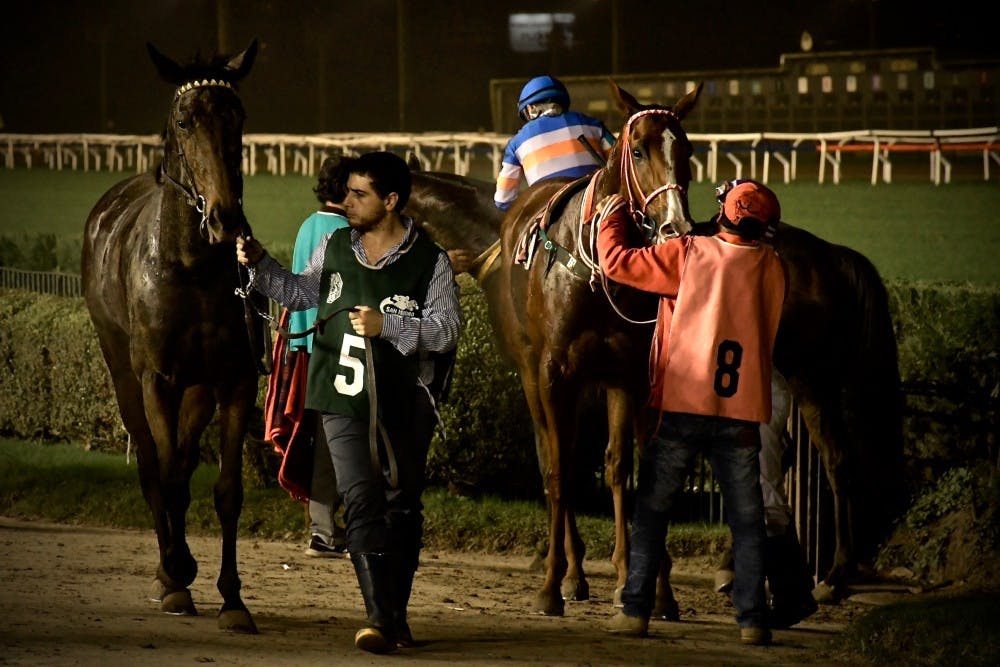DISPATCH
SAN ISIDRO, ARGENTINA | July 20, 2019
As I watched a parade of sleek racehorses and limber jockeys spill onto the racetrack, the man next to me cleared his throat. He was curious if I could make out horse number eight’s four-digit “dividend,” displayed on a screen several hundred feet ahead of us — at least, that’s what I surmised. My inadequate Spanish, coupled with my profound ignorance of horse racing, prevented me from providing an answer, much less understanding what he had just asked me.
I stammered out an evidently incomprehensible response, since he posed the question again. I stumbled again, before he changed tack, asking me which horse I thought would win. Though I comprehended his question, an answer still eluded me.
A few days before, I had resolved to attend the Sunday horse races at the Hipódromo (Racetrack) of San Isidro, several miles north of Buenos Aires. I had arrived in the city two weeks earlier, and I was ready to experience something completely new, not to mention embark on my greatest public transportation challenge yet.
The Hipódromo bears a pedigree as distinguished as that of any thoroughbred. Constructed in the 1930s to seat 100,000 spectators, the complex is, in many ways, the perfect horse-racing venue. At 2,783 meters (~9,130 feet) in length, the Hipódromo’s main grass track allows horses to compete in thousand-meter races without making turns. The sand track boasts similarly vast dimensions.
Each December since 1940, the Hipódromo has hosted the Gran Premio Carlos Pellegrini, billed as the most important horse race in Argentina. At the 1952 Gran Premio, the Hipódromo drew 102,600 spectators in one day — the most in its history, and a figure emblematic of a bygone heyday.

A racehorse after running a circuit on the track.
Photo Credit: Jon Ort / The Daily Princetonian

On this particular Sunday, the races began in the early afternoon and continued at 25-minute intervals until after nine. Throughout the day, I told myself I would leave soon for the Hipódromo. Yet, thanks to eight hours of procrastination (“there are still so many races”), it wasn’t until after six that I found myself on a northbound train, darkness encroaching.
San Isidro’s train station and residential blocks bask beneath a florescent apron of street lights, which abut — but do not illuminate — the Hipódromo. When I arrived, I started west along the complex’s southern edge, the reassuring neon fast receding behind me. Without having consulted any kind of map, I was confident that I would find the entrance.
The Hipódromo, however, is immense.

The grounds encompass 365 acres — the rough equivalent of 275 football fields, or more than half of the Princeton University campus. When I told a coworker about my adventure the next day, he observed that between Gran Premios, the Hipódromo hosts Lollapalooza Argentina. That night, I learned why many thousands of revelers fit within the grounds. Twenty-five minutes later, I staggered to the lone lamppost on the southwestern corner, baffled at the eternity that had passed since I got off the train.
After 10 more minutes, I found a ticket booth and gained free admittance from the clerk, who was astonished anyone would come with only forty minutes left in a full day of horse racing. A few dozen spectators milled on the lawn, and several more gazed out from the box seats of the portentously named “Jockey Club.”

A horse — and its jockey — gallop past spectators after winning the final race of the night.
Photo Credit: Jon Ort / The Daily Princetonian
At the Hipódromo, spectators may place bets on horses whose prospects they deem favorable. It is an enterprise dominated by men, many of whom observe the proceedings from balcony perches, their views half-obscured by dense wafts of cigarette smoke. Before each race, the horses slated to compete are paraded around a circular pen, affording all an equal chance to inspect the contenders.
Of the horse-racing gamblers (if such a grandiose title befits people who were putting down only a few dollars) I encountered, all seemed well-versed in the minutiae of the sport. Online, I had failed to decipher an inscrutable statistics sheet, which included every horse’s name, stud, record over the last four races, jockey, trainer, hair type, mother, and father. Yet, my Argentine counterparts maneuvered through the numbers and names with a facility I imagine could only be acquired through lifelong exposure.
My legs were sore as my eyes followed the jockeys heading out for the first horse race of my life. I blundered through my awkward conversation with the gambler. A few more minutes and the race began, albeit beyond our sight, on the far side of the track. The jockeys soon dashed into view, straining to overtake one another before again disappearing into darkness. A voice announced first, second, and third place via loudspeaker.
The process repeated twice. I ignored the schedule in my hands, and I did not realize when the last race of the night had finished. While watching a sport obsessed with the passing of every second, I lost track of time. I had fallen into the Hipódromo’s regimented rhythm, which, after nearly a century, still hums to the beat of pounding hooves.
Editor’s Note: The Prospect is thrilled to debut a new series, “Dispatches,” in which ‘Prince’ staffers reflect on their travel and work experiences over the summer. Whether close to campus or across the globe, our staff are gaining new perspectives and insights, and we are delighted to share some of them with you.








